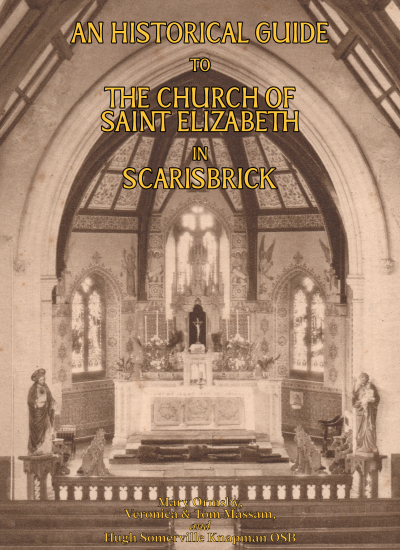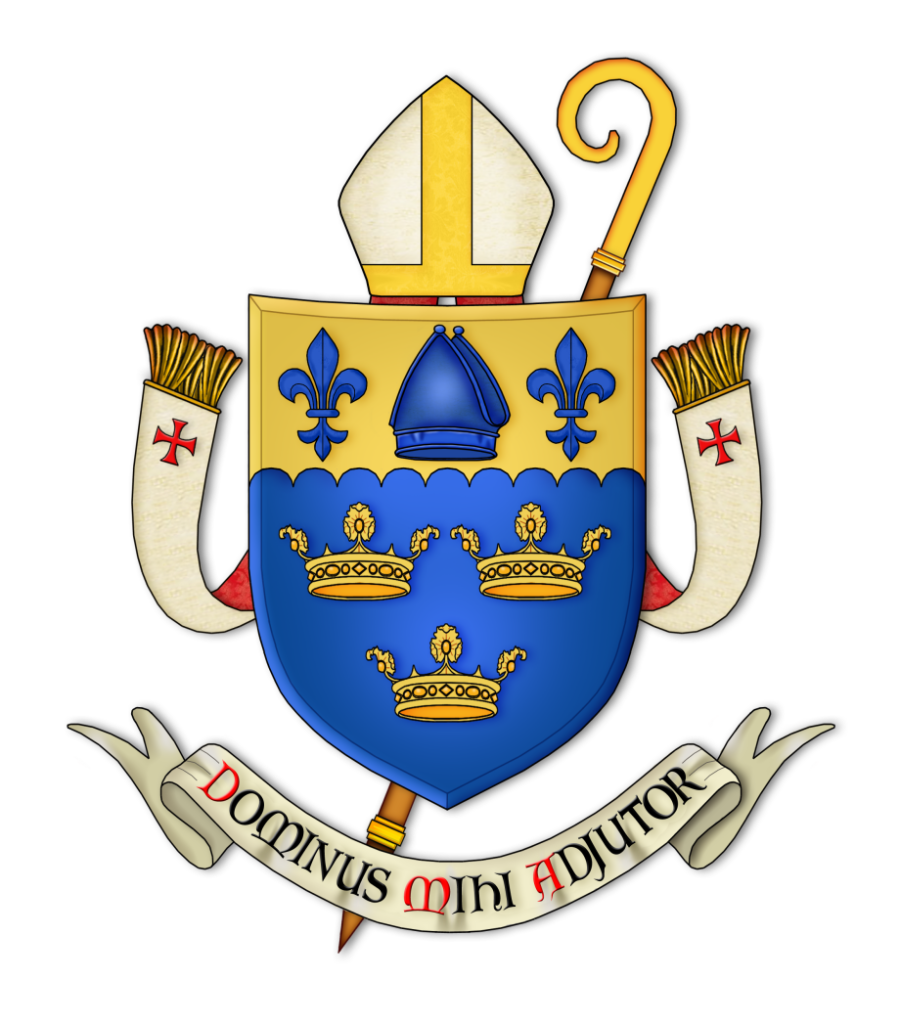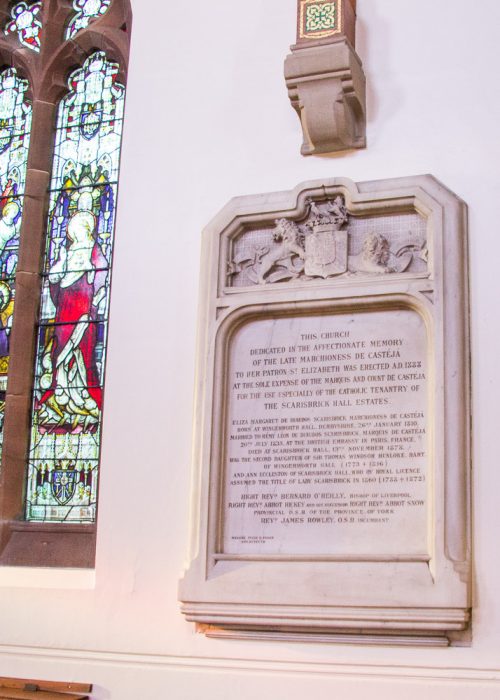Our Mission
We exist to worship God, and through our worship He brings us into deeper communion with Him and each other. The parish of St Elizabeth’s strives to recognise and serve God’s presence in others.
Historical Guide
In 2022 an historical guide to St Elizabeth’s, first written by several parishioners a decade ago, was updated, edited, and then published by Weldon Press, an imprint of Douai Abbey. The Guide offers a detailed description of the church and an historical overview of the parish since its foundation as a mission in penal times.
The Guide can be purchased at the back of the church for £6, or can be ordered from the parish office. Postage in the UK is £2.50. Internationally, postage to Europe is £5.25, and to the Rest of the World it is £9.85.

Safeguarding Representative
Christians believe that all people should be respected, supported, and protected from harm, and that the Church has a special responsibility for this, especially towards those who are vulnerable.
We take safeguarding extremely seriously. The parish follows best practice in the matter of safeguarding children and vulnerable adults.
After recent national reforms, the parish now falls under the oversight of the Religious Life Safeguarding Service (RLSS) rather than the Archdiocese of Liverpool, since the parish belongs to Douai Abbey.
Parish Safeguarding Representative: Mr Les Rippon
scarisbrick.safeguarding@douaiabbey.org.uk
The Religious Life Safeguarding Service (RLSS) can be contacted via:
Finance Committee
The finance committee is expected to meet regularly several times a year, or when convened by the parish priest, to monitor parish finances and to authorise significant parish expenditures. The committee organises a quinquennial survey to help maintain the fabric of the church buildings. The committee works according to the guidelines of the Douai Abbey Parishes Trust (DAPT). The parish books are checked by Mr Grahame Laird.
Members of the Finance Committee as of November 2022:
- Fr Godric Timney OSB
- Mr G O’Brien
- Mr L Rippon (Chair)
- Mrs A Molyneux
- Mrs M Collins
- Mrs M Ormsby
- Mr G Laird
Parish Schools
St Mary’s is the local Catholic primary school. Their Mission Statement, which was written in consultation with the pupils and parents is “Living and Learning Together Shining in our Faith.” St Mary’s is very much an inclusive school, where each child is nurtured and challenged to achieve their very best.
There are strong parish-school links with the parish clergy regularly visiting school and the children visiting the church as part of their RE curriculum. St Mary’s also has a nursery, under the control of the Head Teacher, which operates during term time.
The senior children go mainly to St Bede’s Catholic High school in Ormskirk, one of the highest performing schools in the area, with a great history.
St Bede’s vision is to create a world class Catholic education that encourages students to help make the world a better place, with values of love, faith and hope.
The Benedictines
It sometimes puzzles people that monks can live miles away from their monasteries. The priests serving St Elizabeth’s are used to being asked about this. The English Benedictines have a very long tradition of their monks evangelizing miles from home. Christianity, in fact, was brought to England in 597 by 30 monks accompanying St Augustine of Canterbury, whom Pope St Gregory the Great despatched to bring the Gospel to the Anglo-Saxons. After the English Reformation three monasteries of English monks were established in France in the early 17th century, and within a short time monk-priests came back to England and Wales to minister to the Catholic community. Some of these monks were put to death simply because they were priests. The martyr St Alban Roe was a founder monk of the community now at Douai Abbey in Berkshire.

History of St Elizabeth’s

The parish of St Elizabeth’s was founded in 1888 when the current church was built by the Marquis de Castéja in memory of his wife Eliza. Prior to the opening of St Elizabeth’s, from 1814 Mass had been said in the church of St Mary which had previously been the village’s old tithe barn and stood on the site of current graveyard. The Catholic tradition in Scarisbrick goes back long before 1814, when Mass was said for all the Catholic tenants in the chapel at Scarisbrick Hall. The first record found of a chapel there dates to 1420, and in the 17th & 18th centuries the Hall operated as a clandestine Jesuit junior school.
St Elizabeth’s contains many beautiful stained glass windows, statues and carvings which reflect the influence of both Peter Paul Pugin, the architect, and the French ancestry of the Castéja family.
Since its opening there have been several changes to St Elizabeth’s, most notably the installation of the new altar in the late 1960s in the wake of Vatican II, and changes to the internal decoration which used to be even more ornate.